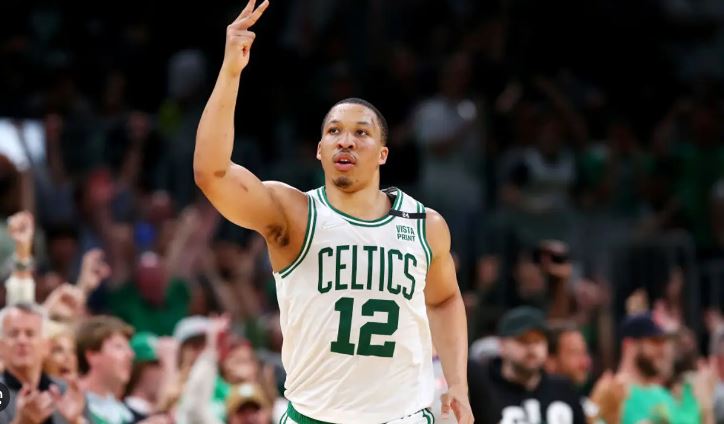Will Minnesota’s high taxes hurt the Vikings again?
Earlier this year, the Boston Celtics offered forward Grant Williams $48 million to continue playing for them for another four years. He turned them down. Why? Taxes.
Massachusetts used to levy a 5% flat income tax but, in November 2022, voters in the Bay State approved a “millionaire’s tax” which will tax annual earnings above $1 million at a rate of 9%, which amounts to an 80% rate increase on affected personal and small business income. Williams explained:
In Boston, it’s really like $48 million with the millionaire’s tax, so $54 million in Dallas is really like $58 million in Boston and $63 million in L.A.
So Williams will be playing for the Dallas Mavericks next season, where he will pay an income tax of 0%.

Taxes are why Tyreek Hill chose the Miami Dolphins over the New York Jets when he left the Chiefs. They are one reason, according to executives and scouts for Major League Baseball clubs based in California, that many prospects are not interested in signing with a team in the Golden State. Matt Borelli wrote for DodgerBlue.com in January that “it can be presumed that California isn’t an appealing destination for free agents because of the state’s income tax rate of 13.3%.”
This negatively affects team performance. As I wrote in 2021:
In a 2018 paper titled ‘Touchdowns, Sacks and Income Tax – How the Taxman decides who wins the Super Bowl, economist Matthias Petutschnig looked at data for a 23-year period from 1994 to 2016 and found “a significant negative relation between the amount of the net (after-tax) salary cap represented by the personal income tax rate of the teams’ home states and the success of the teams.”
Why would tax rates matter for results? The NFL’s salary cap limits what each team can spend on player salaries. The cap is $198 million this season, an average of $3.7 million per player for a 53-man roster.
But that is gross pay; it doesn’t take state income taxes into account. In higher tax states, like Minnesota, a greater share of that gross income is swallowed up by state taxes than in a lower tax state like Florida. So, to offer the same net pay as a Florida team, a Minnesota team must offer higher gross pay. But that comes out of the $198 million cap, reducing the amount available to attract other players: “This reduces the average talent level of the whole roster of a team in a high tax state and diminishes its chances of winning,” Petutschnig says.
Another paper supports this finding. ‘State Income Taxes and Team Performance: Do Teams Bear the Burden?’ by economist Erik Hembre investigates “the effect of income tax rates on professional team performance using data from professional baseball, basketball, football, and hockey leagues.” “Regressing income tax rates on winning percentage between 1995 and 2017,” he writes, “I find robust evidence of a negative income tax effect on team performance.”
Three points lend strength to Hembre’s findings. First, looking at college games where the athletes are unpaid, we would expect to find this effect absent and, indeed, Hembre finds that college teams in low tax-states performed no better than college teams in high-tax states. Second, of the leagues investigated, teams’ results were the least correlated with their states’ tax rates in baseball. This, again, is what you would expect: There is no limit on the salaries MLB teams can pay their players so baseball franchises in high-tax states don’t face the constraint of a salary cap. Third, when Hembre pushed the analysis back to 1977, he finds that “the income tax effect only arose after players gained unrestricted free agency, allowing them to shift the income tax burden on to teams.”
The Minnesota Vikings start their season today facing the Tampa Bay Buccaneers at the U.S. Bank Stadium. As research shows, with our state’s high taxes they are starting with a handicap.